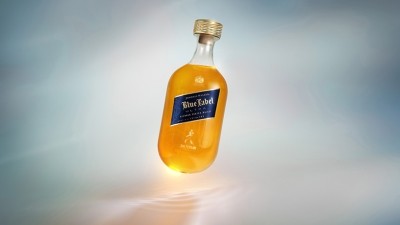Scotland increases Minimum Unit Price for alcohol

Scotland’s MUP will rise from the minimum of 50p per unit to 65p per unit. That takes inflation into account (the policy was introduced at 50p in 2018), but also seeks to increase the impact of the policy by raising the minimum price in real terms.
Increasing the policy beyond inflation
Scotland became the first country in the world to introduce minimum unit pricing – which sets the lowest price a unit of alcohol can be sold for – in April 2018. The aim of MUP is to reduce the harm caused by alcohol by setting a minimum price alcohol can be sold for.
The term of the policy, however, was six years: meaning the policy had to be revisited if it was to continue.
A proposal to increase MUP by 15p was put on the table last year, which has since been approved by the Scottish Parliament. A new rate, at 65p, came into effect yesterday (September 30).
Why the increase? MUP appears to have reduced deaths compared to a scenario where no MUP was in place; but the actual number of alcohol-specific deaths in Scotland is still rising. This has led the Scottish government to push up MUP past the rate of inflation, to a higher rate that it believes can further reduce deaths and hospital admissions.
Minimum Unit Pricing is now also found in:
- Canadian provinces
- Wales (introduced March 2020)
- Ireland (January 2022)
- Australia's Northern Territory- 'minimum floor price' (Oct 2018)
The increase is not expected to see price changes across all product ranges; rather, targeting cheap alcohol.
In May 2023, a study carried out by researchers from Public Health Scotland and the University of Glasgow suggested a 13% reduction in deaths from alcohol consumption in the two years and eight months following the implementation of the policy.
That equates to avoiding around 150 deaths a year (these data are drawn from an estimate, using English data as a comparison, as what the figures would have been without MUP).
However, despite the effect of MUP, the government says there is still more work to be done: with the latest alcohol-specific deaths showing there has been an increase of 2% in 2022 in Scotland.
ABV | volume | Minimum price | |
Whisky | 40% | 700ml | £18.20 |
Vodka/gin | 37.5% | 700ml | £17.07 |
Wine | 12.5% | 750ml | £6.10 |
Beer/lager | 4.5% | 4x 440ml | £5.16 |
Cider | 5% | 2L | £6.50 |
Responding to the increase in MUP, Dr Tara Shivaji, Consultant at Public Health Scotland, said: “We’re pleased to see the Scottish Government introduce this increase. Scotland has the highest levels of alcohol harm in the UK but, since the introduction of MUP, we have seen that gap narrow.
“We found that MUP is an evidence-based policy which has contributed to saving lives and reducing harms from alcohol. For MUP to continue to work, its value has to be maintained.
“While we welcome this introduction today, there’s an urgent need for comprehensive action at scale to address the high levels of alcohol harm in Scotland and change our relationship with alcohol.”
The PHS evaluation found there was ‘no clear evidence of substantial negative impacts on the alcoholic drinks industry’.
Guide for brands and retailers
What is the minimum unit price? The price per unit (£0.65) x the strength of alcohol (ABV) x the volume in liters.
The MUP applies to all alcohol - including those under promotion - so retailers must carefully calculate any special offers.
To help navigate these calculations and understand where MUP applies, the Scottish Government and Scottish Grocer’s Federation have together published an official Retailers Guide to MUP.
Rumbling on: What next for alcohol marketing rules?
In 2023, the Scottish government launched a consultation into proposals for strict new alcohol marketing restrictions: which considered banning alcohol sports sponsorship, prohibiting marketing outdoors; and banning alcohol ads in newspapers and magazines.
These proposals – which drew the ire of the industry with a coalition of more than 100 producers and brands calling for them to be abandoned - failed to make it past the consultation stage.
But the idea has not been dropped completely. Health Secretary Neil Gray has asked Public Health Scotland to ‘review evidence and options for reducing exposure to alcohol marketing’, although with no further details on what these options might be or when a review might be published.










